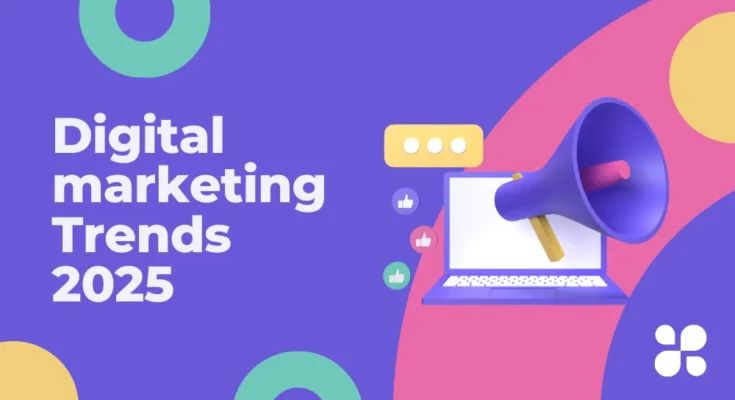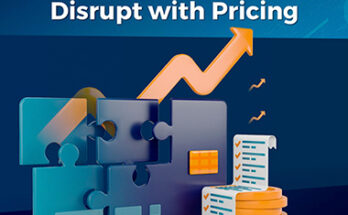Introduction
Digital marketing is evolving at an unprecedented pace. As we step into 2025, brands that want to stay competitive must adapt to new technologies, shifts in consumer behavior, and emerging strategies. This article explores the top 10 digital marketing trends to watch in 2025, backed by expert insights, real-world examples, and actionable advice.
1. AI-Powered Marketing Is Becoming Smarter
Artificial Intelligence is no longer a buzzword—it’s a necessity. AI tools now analyze user data in real time, automate tasks like content generation, and optimize ad spend across platforms.
Example: Tools like ChatGPT, Jasper, and Copy.ai help marketers produce SEO-friendly content faster than ever, while Google’s Performance Max uses AI to automate ad delivery based on performance data.
Tip: If you’re not leveraging AI, you’re falling behind. Start by testing AI-powered analytics and email automation platforms.
2. Voice Search Optimization is Crucial
As smart assistants like Alexa, Siri, and Google Assistant continue to grow in popularity, voice search is becoming a key part of SEO strategies.
Fact: By 2025, it’s expected that over 50% of all searches will be voice-based.
Tip: Optimize your content with conversational language and long-tail keywords. Structure your content in question-and-answer formats to improve visibility.
3. Video Marketing Remains King
Short-form video content continues to dominate, thanks to platforms like TikTok, YouTube Shorts, and Instagram Reels. Brands using video see higher engagement rates and conversion.
Stat: Marketers who use video grow revenue 49% faster than non-video users.
Strategy: Create educational, entertaining, or behind-the-scenes videos. Repurpose blog posts into video summaries for broader reach.
4. First-Party Data Becomes the Gold Standard
With Google phasing out third-party cookies, collecting first-party data has become more important than ever.
What This Means: Brands must rely on data gathered directly from users through opt-in forms, surveys, and customer interactions.
Tip: Invest in CRM tools, improve email sign-up strategies, and offer value-driven content in exchange for data.
5. Hyper-Personalization Takes Center Stage
Personalized marketing goes beyond using a customer’s name. It now involves tailoring content, offers, and messaging based on behavior, location, and preferences.
Example: Netflix recommends shows based on watch history; eCommerce sites personalize product suggestions to boost sales.
How to Start: Use dynamic content in emails and AI-powered personalization engines on websites.
6. Social Commerce Is Exploding
Social media platforms are transforming into full-fledged shopping destinations. Instagram, TikTok, and Facebook now offer in-app purchasing, making it easier for users to buy without leaving the app.
Why It Matters: Younger consumers trust influencer recommendations and find convenience in shopping directly through social media.
Tip: Set up shop on platforms where your audience is most active. Use influencer marketing to drive traffic to your storefront.
7. Interactive Content Drives Higher Engagement
Quizzes, polls, live Q&A sessions, and interactive infographics are grabbing more attention than static content.
Stat: Interactive content gets 2x more engagement than traditional formats.
Examples: Buzzfeed quizzes, Instagram story polls, or calculators on finance websites.
Use Case: Embed quizzes in blogs or product pages to help users find personalized recommendations.
8. Influencer Partnerships Are More Strategic
Influencer marketing is maturing. Brands are now focusing on long-term partnerships and micro-influencers who drive real engagement rather than just vanity metrics.
Trend: Micro-influencers with 10k–50k followers have higher trust and niche authority.
Pro Tip: Choose influencers who align with your brand values and have an authentic voice, not just a large following.
9. Augmented Reality (AR) Is Enhancing UX
AR is changing how consumers experience products online. From trying on glasses virtually to visualizing furniture in their living room, AR improves confidence in buying decisions.
Stat: Over 100 million users have already engaged with AR shopping features in 2024.
Brands Using It: IKEA, Sephora, and Warby Parker are already seeing increased conversions thanks to AR.
10. Ethical Marketing and Digital Sustainability Matter
Today’s consumers expect brands to stand for something. Ethical marketing—transparency, inclusivity, and eco-awareness—is not just a trend but a demand.
Insight: 70% of consumers prefer buying from brands aligned with their personal values.
How to Respond: Be transparent about your processes, support causes your audience cares about, and ensure your campaigns reflect diversity and responsibility.
Conclusion: Adapt or Be Left Behind
The digital marketing landscape in 2025 is being shaped by rapid advancements in technology and shifting user expectations. Businesses that want to thrive must stay agile, data-driven, and customer-focused.
Whether you’re a startup founder, freelance marketer, or running a full-scale digital agency, these trends offer a roadmap for success in the year ahead.
FAQs
What is the biggest digital marketing trend in 2025?
AI-powered personalization and data-driven decision-making are leading the way in 2025.
How do I prepare for the loss of third-party cookies?
Focus on collecting first-party data through email lists, customer accounts, and surveys.
Is video marketing still effective in 2025?
Yes, video remains the most engaging content format across platforms.
Why is ethical marketing important now?
Consumers expect brands to be transparent, inclusive, and socially responsible.



